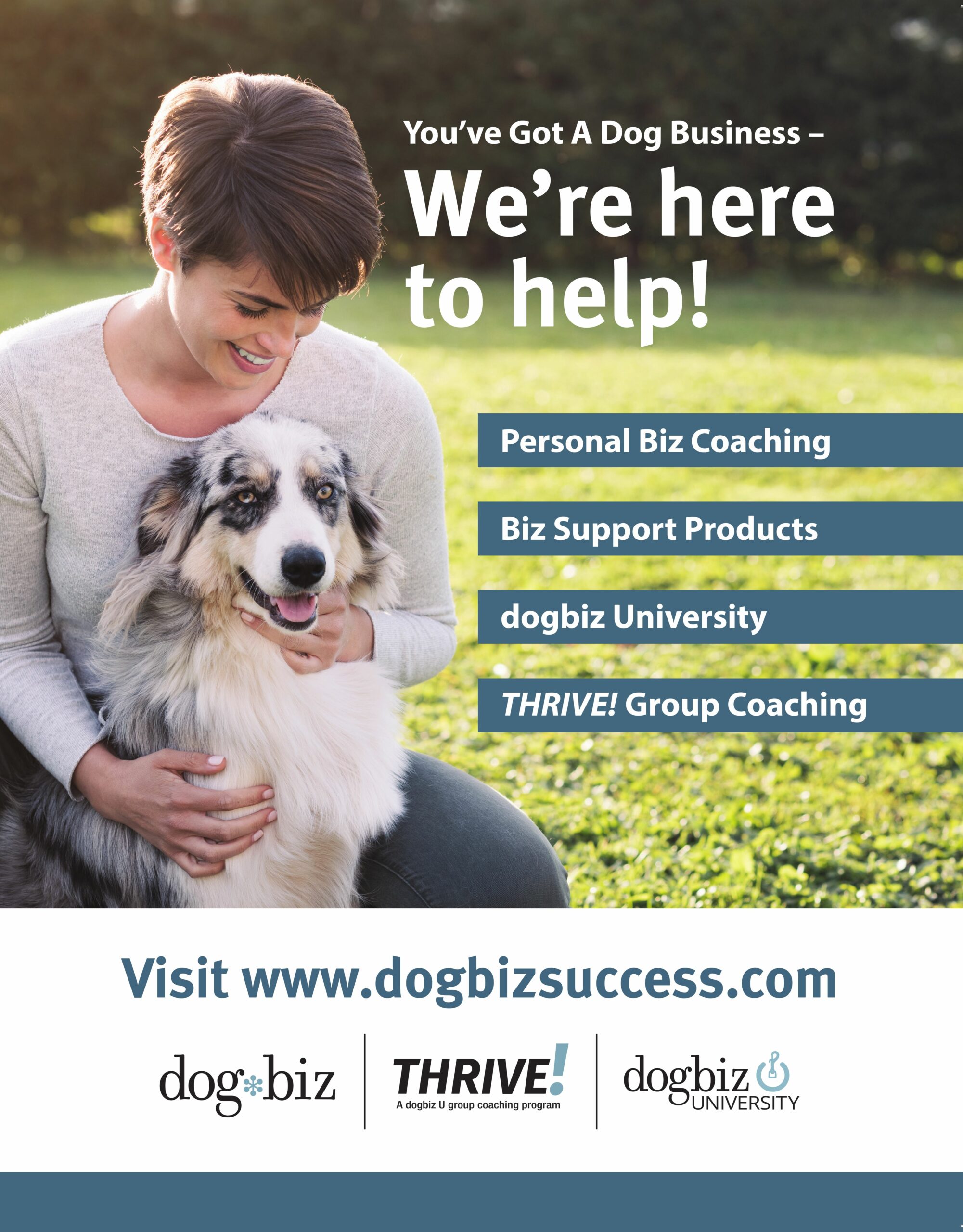
What Does Citronella Really Do to a Dog?
My ‘Paws for Thoughts’ blogs are just what they say – thoughts. I don’t profess to be an expert on my subject matter or feel that we should believe everything we read, but it should always make one think. This train of thought started with an email I received the other morning from a man with a cocker spaniel, Bertie. The four-year-old dog was now on his third home. A couple of months previously this client had canceled his appointment with me because my simple telephone advice had worked instantly. Obviously I was… Continued
Confession of a Professional Dog Trainer
My name is Daniel H. Antolec. I am a professional certified force-free trainer…and I own a shock collar. Not only do I own a shock collar, but it is among my most prized possessions and is proudly displayed in my library of 45 books and 25 DVDs on training and behavior. You see, once upon a time I met a little dog named Pete and his owner, Penelope. I changed their names for this blog but the story is factual. Pete was six weeks old when Penelope obtained him. He… Continued
The Impact of Using Shock to Train Recall
This series of blog posts recounts topics drawn from a recent guest segment by Linda Michaels on the Pet Professional Guild Radio Show. Question: Can you tell us if you think training an emergency recall with P+ (positive punishment such as a shock collar) could, in any way, be preferable to using R+ (positive reinforcement, such as a treat or affection)? Answer: This is such an important topic because both shock collar trainers and so-called “balanced trainers often use recall/come in demonstrations to the public or online, as a way to impress… Continued
AN OPEN LETTER TO THE SCOTTISH PARLIAMENT REGARDING THE USE OF SHOCK IN DOG TRAINING
AN OPEN LETTER TO THE SCOTTISH PARLIAMENT REGARDING THE USE OF SHOCK IN DOG TRAINING To download this as a PDF Click here The Pet Professional Guild (PPG) believes unequivocally that the pet-owning general public needs – and deserves – to have increased access to better education to help ensure that all pet animals live in safe, nurturing and stable environments. Such environments can go a long way towards preventing behavioural issues. However, depending on an individual dog’s genetics, environment and early learning experiences, behaviour problems may… Continued
Shaping without a Clicker
Most trainers agree that if there is one thing that the tool called a clicker is useful for in particular, it is for shaping behavior. Shaping consists of marking and reinforcing successive approximations towards a goal behavior. When shaping, the trainer can find herself needing to mark very small or quick movements indeed, sometimes just a weight shift or a breath. When that is the case, the behavior is usually long over by the time one can get food or a toy to the animal. A clicker or other marker can form a “bridge” between the… Continued
Learning by Observation
This is a really exciting time to be a canine professional. Dogs have come to the forefront in research, giving us new information about how they learn as well as their cognitive abilities. This new data allows trainers and behaviorists to influence canine learning and explain behavior using innovative and scientifically valid methods. A simple example is dogs learning through observation. When I began training dogs 15 years ago, we did not believe dogs learned by watching us or other dogs. I distinctly remember being scoffed at by my mentor… Continued
Hello, May I Have Your Attention?
We’ve all been there, sitting in the audience waiting for the guest speaker to come on stage. Or it could be at a wedding or even a classroom. The crowd is talking, laughing in a collective rumble, when suddenly someone notices that the speaker is on stage, waiting patiently for everyone to take notice. Sometimes you can hear the “shushhhhhhhh”, but within a matter of seconds the audience is in rapt attention….the silence is deafening. Compare that to the unfortunate speaker who tries to talk above the noise: “Excuse me,… Continued
Six Ways to Prepare Your Dog for Fireworks
Oh no. Noisy holiday rolling around again, and your dog is scared of fireworks? Even though it’s just a few days before the holiday, you can make a plan and take action to help your dog be a bit less afraid of the unpredictable scary sounds of fireworks, firecrackers, whistles, and even guns. Get Ready Here are some things you can do today. Get some great treats and start carrying them around. Whenever there is any kind of sudden or startling noise, including stray bangs and booms as people start to test… Continued

Misconceptions of Counterconditioning Leash Reactive Dogs
Misconception #1 – Feeding a dog when they are barking or fearful reinforces the fear. Absolutely not true. You can only cause more fear by implementing more fear or pain. Fear trumps food, so if the dog is taking the food, they are not that fearful. The food is not the focus of the on leash event; the impending, approaching or sudden stimulus is the focus. This is not like a food bowl that gets kicked repeatedly or a dog that is attacked by other dogs over food, and the… Continued
Wanna Play?
Humans and dogs love to play together; from recent research, it seems that this shared love for play has been a key element in shaping our close bond. While there is still a question as to whether shared play creates a solid relationship between a person and a dog or it merely adds to an already strong bond, what’s certain is that people who play frequently and intensively with their dogs enjoy those relationships more — as do the dogs. A recent paper by John Bradshaw, “Who do adult dogs ‘play’?”… Continued
Not All “Choices” Are Equal
Shout-outs to Companion Animal Psychology for the post, The Right to Walk Away” which covers the effects of offering that particular choice in animal experiments, and encourages us to apply the concept to our animals’ lives. Also to Yvette Van Veen for her piece, “A” Sucks “B” Stinks What Kind of Choice is That? , which definitely has some “rant” commonalities with this post of mine. We positive reinforcement-based trainers often point out that our dogs have the choice not to participate in a training session. I think giving the animal “the right to… Continued
Let Rats Decide
I generally write a lot about dog body language in my blog. I discuss letting animals have a say in how and when they are handled and touched. I talk some about how to perceive their answers through observation. And I have shown, in my most popular post of all time, dogs communicating “yes” and “no” about whether they want to be touched. It’s a mini lesson about body language as well as a proposal that we let the dogs decide whether they want to be petted. So you can imagine I was delighted… Continued
Distinguishing Ourselves as Force-Free Professionals
Some time ago I engaged in an online conversation with a dozen or more force-free trainers and the subject of professional certification came up. Most of the trainers had CPDT-KA credentials and some were considering letting them lapse because they saw little value in it. Others were new to the business and planned on testing for certification. One very experienced trainer rejected the need for certification and declared dog owners did not care about credentials. In my experience only two or three owners ever asked basic questions to determine whether… Continued

Dog Bites and the Importance of Education
I was very fortunate to be able to attend PPG Special Council member Victoria Stilwell’s second Annual Dog Bite Prevention and Behaviour Conference, held earlier this month at the University of Lincoln in England. The conference is a national event dedicated to finding practical and workable solutions to the issue of dog bites through education and heightened awareness. It began with a welcome introduction by Victoria Stilwell, which had us all eagerly awaiting the presentations that were to follow. Three of the presenters hailed from the University of Lincoln itself.… Continued
Use of Reiki in Pets
Reiki is a Japanese technique, based on the teaching of Mikao Usui in 1922, for stress reduction and relaxation that is also stated to promote healing 1. Practitioners believe that the human body is made up of energy and Reiki balances the human energy fields known as Auras, and energy centers known as Chakras 1. Although some practitioners swear by the benefits of Reiki, there are still limited research studies to provide evidenced-based practice guidelines and recognized results to prove its reliability and its use should not be substituted for… Continued
Murphy the Hero Dog
by Beth Napolitano Dogs have an intense ability to smell. Around 60 percent of a dog’s brain is dedicated to being able to identify, sort and locate smells. All dogs have the ability to smell and track multiple odors simultaneously, but many times pet dogs don’t know how to make use of their noses. However, many dogs also figure out how to use their gift. Murphy, a beagle who has had no training in scent whatsoever, has managed to do this. When Murphy was about six months old he suddenly started… Continued
Non-Aggressive Behaviors as a Precursor to Outright Aggression
Certain non-aggressive behaviors are often overlooked, yet can be a precursor to outright aggression if the dog is pushed to the point of no return. Colleen Pelar investigates the issues of escape and avoidance in the child-dog relationship. Originally published in BARKS from the Guild as Less Is More, May 2015, page 27. Is Avoidance Okay? Many people divide dog behavior into two categories: aggressive and non-aggressive. That is logical enough, but there are plenty of non-aggressive behaviors that indicate that a dog could still do with some help. If… Continued
Before You Share That “Cute” Dog and Baby Picture…
First things first. I didn’t write this with you in mind. Let’s not make this about your dog or your parental decisions. But there’s a problem with sharing that “cute” dog and baby picture. The problem is bigger than your individual situation, your family. The problem is that posting a picture such as the one above sets an example and feeds a dangerous myth. A myth so dangerous that people die because of it. Children, especially, are hurt, and sometimes die because of it. The myth is that good dogs, family dogs, your dogs–don’t bite. The myth… Continued
Lots Of Fine Dogs!
I have a friend who, no matter what crisis he’s going through, will tell you he’s fine. While shopping one day I came across a t-shirt that reminded me of my friend. The shirt had a picture of a cow lying in a field with her legs straight up in the air, like a dead insect; the caption read, “I’m fine”. Because we’re of the same species, we can usually tell when people close to us are not fine by their signs. Maybe it’s the way they talk or their… Continued
Remedial Socialization
I’m embarking on a new adventure in remedial socialization. I have a foster dog who is wonderful with other dogs, but totally avoids humans whenever possible. Sally is playful and sweet once you get to know her, but her first impression leaves a lot to be desired. Since she is reluctant to approach new people, Sally, and dogs like her, linger in shelters due to their inability to connect with potential adopters. I have coached quite a few clients through similar issues and have helped two of my other… Continued
An Open Letter to Canine Research Scientists
PPG Member Linda Michaels MA PCT-A calls on canine research scientists to lead the way on the ethical treatment of companion animals and take a stand against shock collars. It would require a long list to delineate the benefits of companion animal canine research conferences and live streams. Admirably, these conference bring canine researchers into the mainstream of the canine applied practices fields, i.e., dog training. Many pet parents and trainers take careful note of scientific positions and plan to incorporate the lessons-learned into their practice. The researchers benefit in… Continued
The Nose Knows
A well-known test devised in 1970 by psychologist Gordon Gallup Jr. is used to determine whether an animal recognizes himself in a mirror. This “mirror test” is widely regarded as the “gold standard” for determining whether an animal is self-aware, that is, recognizes himself as a distinct individual and has a concept of self. This test may very well do that — sometimes, for some animals. Chimpanzees and some other primates pass easily; elephants and dolphins also pass. Most dogs do not, and, for many scientists, this is held up… Continued
Why Self-Control is Better than “Discipline”
The Oxford Dictionary defines ‘discipline’ as: ‘The practice of training people to obey rules or a code of behavior, using punishment to correct disobedience.’ The word ‘discipline’ not only carries with it the baggage of “force” and “dominance,” but also a hint of worthiness. And yet, ‘that dog needs discipline’ is a phrase we may still hear on a regular basis. ‘That dog needs to be taught some self-discipline’ is a lot more appropriate because it drops the implications of punishment. The definition of ‘self-discipline’ is: ‘The ability to control one’s feelings and overcome one’s weaknesses.’ Discipline… Continued
The Psychological Contract – A System of Beliefs That Needs to Be Articulated to Your Client
Written by Niki Tudge Copyright 2015 When you embark on a consulting or training relationship you should first ensure you have a professional consulting contract with your client. As a professional working with animals there are multiple liability risks open to you. Most of these liabilities will stem from one of three areas. If, as a trainer, you are negligent and do not take reasonable measures to prevent a foreseeable injury from occurring during your contract period, then you are liable. You can also be found liable if you violate… Continued
« Previous 1 … 49 50 51 52 53 … 58 Next »


